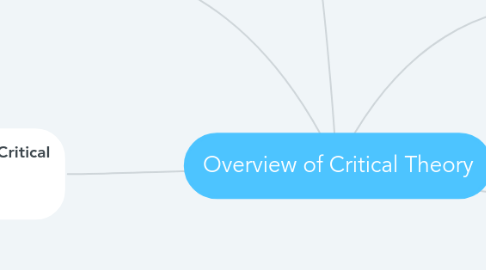Overview of Critical Theory
저자: Hamid A


1. Institute for Social Research in Frankfurt
1.1. "refers to a body of scholarship that examines how society works"
1.1.1. Guided by the belief that "Society should work toward the ideals of equality and social betterment"
2. Initially advocated liberal humanism, but later rejected it.
2.1. The logic of individual autonomy that underlies liberal humanism was viewer as a mechanism for keeping the marginalized in their place by obscuring larger structural systems of inequality.
2.1.1. Fools people into believing that they have more freedom and choice than societal structures actually allow.
2.1.1.1. social justice activists critiqued societal structures and argued that social institutions marginalized women, blacks, indigenous, disabled, Chicano and LGBTQ peoples
2.1.1.1.1. recognized the unequal distribution of power and resources among social groups
3. The book's goal rooted in Critical Theory, is to increase our readers' understanding of:
3.1. Different levels of thinking: Opinion VS Critical thinking, layperson VS Scholarly.
3.1.1. Political and ideological aspects of knowledge production and validation
3.1.1.1. Historical context of current social processes and institutions.
3.1.1.1.1. Process of socialization and its relationship to social stratification.
